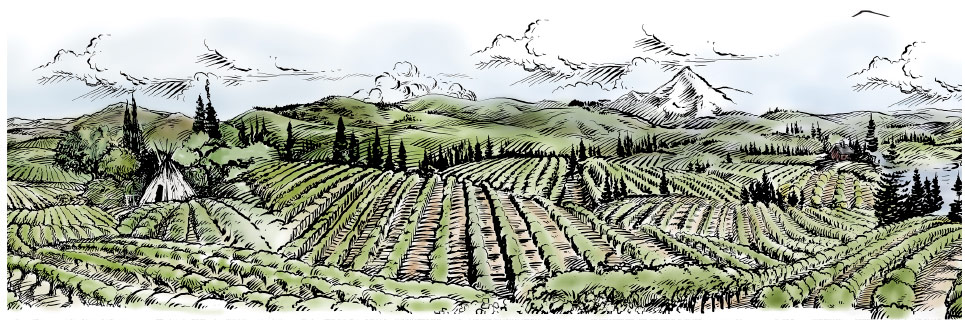The Evolution of Industries
Industries tend to develop in four stages. While the particulars vary from industry to industry, there is nevertheless a common warp and weft on which the designs are woven.
The first stage is the birth of an idea or the knowledge phase. It may be the natural progression of an existing technology such as the laptop computer, the mobile phone, Blu-Ray or digital photography. Or, it may simply be a better mousetrap requiring little or no technological leap like roller bags, quick release ski bindings, or parking garage systems that use LED lights above the parking spaces to tally the open spots in a row or on a floor.
The leap doesn’t have to be a manufactured product. Overnight delivery, urgent care centers, multiplex cinemas, food courts and Southwest Airlines’ boarding system are all examples of low-tech or no-tech methods of better delivering a service. It took until the 1960’s for someone to visualize the efficiency of a single queue at banks, government offices and ticket booths.
Some inventions create needs people didn’t know they had. These too may be high-tech or low-tech. Examples are the VCR, the answering machine, GPS navigation systems, truck bed liners or Post-it notes.
The knowledge phase typically doesn’t last very long, particularly in the digital age where information spans the globe overnight. Ideas and products are readily pirated, tweaked and presented to the market as knock-offs. Despite the enormous resources companies employ to protect trademarks and patents, the protections are porous.
Thus emerges the production phase as competing technologies sort out. The VCR contest between Beta and VHS lasted for years, which is unusual; more common was Blu-ray supplanting conventional CD’s by dint of superior quality. Cellular-based and satellite-based portable phone technologies waged a titanic battle for supremacy with cell becoming the U.S. standard and satellite the European standard. The adoption of cellar technology in the U.S. despite the greater capacity of a satellite-based system demonstrates that the best technology doesn’t always win. It also explains why we remain in the drunk tank on fossil fuels.
Technologies can win out only to be challenged anew later. The PC dominated Apple with Microsoft’s relatively open architecture operating system, which permitted far more software applications to be developed for PC’s than for the tightly proprietary Apple operating system. While PC’s still vastly predominate, Apple has developed its own applications around avant-garde products that have captured an increasing market share.
Typically, the production phase is also short-lived if only because product life is similarly so. The marketing phase that emerges next usually endures longer because it is more asymmetrical. Virtually identical products may be marketed entirely differently. Current ads for the Volkswagen Passat are cast around wry humor while those for the Honda Civic tout history and engineering capability. Those for Miller Lite beer mock the manhood of one of a group of friends with his beer choice (not Miller) being “the second unmanly thing you’ve done today.” By comparison, Coors promotes a party atmosphere.
Beyond personality, the array of marketing elements taken together determines the lifespan of the product. Which features will customers pay for and which are superfluous? How are these features bundled? Bundling that cannot be easily compared has become the fundamental selling strategy in industries such as computers and new cars. How are products serviced or are they? Most electronics are discardable because of obsolescence.
How and where products are sold can be a major determinate of success. Beyond the innovative prowess of Apple, sleek freestanding stores in upscale shopping areas with ‘cool’ salespeople have complemented the products themselves. By contrast, the web-based build-it-yourself approach of most PC makers can overwhelm the average buyer. Schwan’s, originally a home delivery ice cream company in the 50’s, has sustained a niche long after home delivery went the way of telephone operators by capitalizing on small-refrigerated trucks to deliver a wide variety of frozen and refrigerated foods.
Products that survive the foregoing stand to become brands, the most enduring phase of the product life cycle. Of the first three phases, knowledge and production, while critical to reach the marketing stage, are the least important to brand. What makes a brand? It is the quality of permanence in consumers’ minds. Peanut butter, mayonnaise and tuna fish enjoy the greatest brand loyalty among grocery shoppers—of the two, it might be said that peanut butter was once innovative when the process for emulsifying the oil was discovered. Otherwise, they exist as fixtures in the consumer’s minds; even discounts rarely spur brand switching.
The anomaly of the wine industry is that the knowledge phase lasted 10,000 years. As recently as 20 years ago, the knowledge of winemaking was a sufficient competitive advantage unto itself. Today, however, good wine is simply the ante to play poker and, at the risk of offending artistic sensibilities, wine is now a marketing driven business. To the point of whether quality is still a differentiating factor, how many can remember a score from the Wine Spectator other than their own?
Bob Higgins, a founder of Highland Capital Partners in Boston, observed that when he invested in technology, he tended to lose money but when he invested in business models, he tended to make money. Applied to the wine industry, all wineries worldwide employ roughly the same methods to make wine. The successful ones persuade the consumer that they do something different. Persuasion is marketing.

